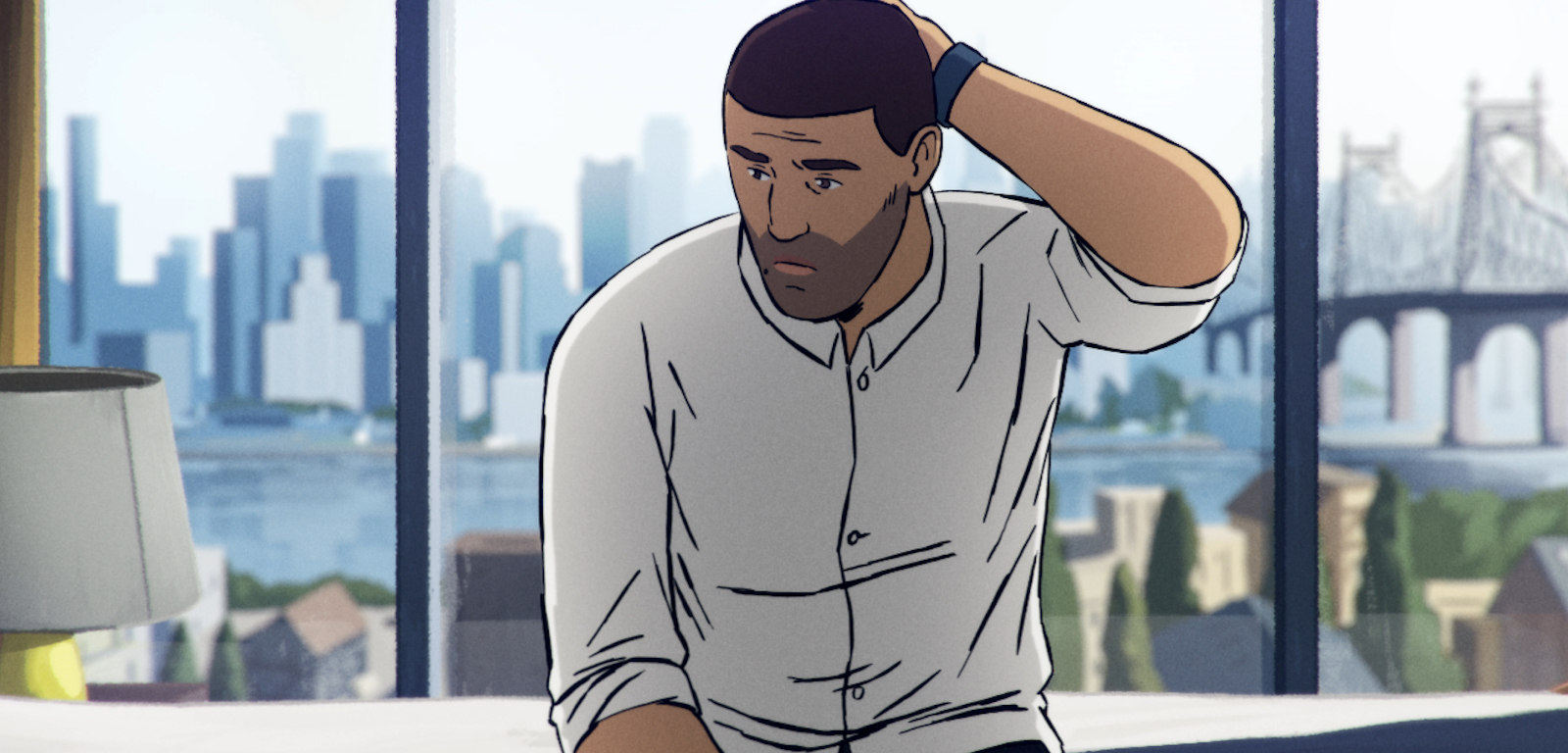Within its many layers, Flee is ultimately a brutally realistic and dark coming-out tale
Flee (Flugt, 2021) is a movie whose main feature is probably its multiplicity. It is a documentary. It is an animation. It is an almost therapy-like first-person account. It is a harrowing and honest portrayal of what it means to be a refugee. It is also about how not only cinema, but art in general – music, storytelling, a soap opera – can help us find meaning in life when reality doesn’t really seem to make sense. And it is, at once, a brutal and sweet, coming-out tale.
And what makes Danish director Jonas Poher Rasmussen’s movie so brilliant is how filmmaking – all the tools and resources provided by film language – is the only way to bring each of these layers to life. In his documentary, no narrative or aesthetic choice is made by chance: every element and technique has a purpose, which is not only to convey the protagonist’s story to the screen, but to immerse the viewer in his physical and, most importantly, emotional journey.
Flee follows the story of Amin, from his childhood in Kabul during the early 1980s, his family’s escape to Russia during the US-USSR war, and their desolating years in early 90s Moscow waiting for a chance to cross to western Europe and reunite with his older brother. Ironically, we know the protagonist will somehow make it, since he is the one telling Rasmussen his story in present-day Copenhagen. However what matters in Amin’s journey is not its end, but all the gruesome and brutal details of how he got to where he is today.
Portraying on the screen all this nonsensical, almost unbelievable, brutality is what makes the choice of animation so fundamental to the movie. It is not just the only way to recreate Amin’s odyssey in a respectful and faithful manner: with its different textures, going from the pictorial to something more abstract, the animation is also used to represent the mercurial and vacillating mechanisms of memory and trauma. And with its almost endless possibilities, it also allows for uniquely meaningful shots, such as the moment when Amin and his family, adrift in a very small boat trying to cross to Sweden, are faced with a huge Norwegian ship that just stares idly and refuses to help them. The stark size contrast between the two vessels works as a perfect synthesis of the relationship between Europe/the West and refugees not only at that point in time, but still today.
At the same time, Rasmussen intersperses the narrative with occasional live-action documentary footage, reminding the viewer that despite how beyond belief the story might seem, it is all based on an actual account. And this juxtaposition between reality and imagination, documentary and animation, life and art, is the central axis to Flee’s unique perspective on Amin’s life story. It is not by chance that, from the very beginning of the movie, the protagonist is always listening to music (A-ha, Roxette), dreaming about a barely clothed Jean-Claude Van Damme, or watching a Mexican soap opera with his family in Russia. Throughout the unimaginable chaos and tragedy that dominated a big part of his life, art was always a refuge, an escape – somewhere he could flee to. Because no matter how bad things can get, if we are still able to imagine, to dream, to devise a better future, that means we are not dead yet.
It is in Amin’s ability to – always – escape, and in Rasmussen’s talent in using cinema to create a space in which this journey finally makes sense, to turn his movie into another refuge for his character, that Flee also becomes an essentially queer film. This need to escape, to use art, and movies, music, TV, books, as an almost magic haven from the surrounding oppression and intolerance is common to most queer subjects – gay, lesbian, trans people. In Amin’s case, that is not different – only more extreme and violent. However, when he is faced with, very late in the movie, the need to make a harrowing and unimaginable decision regarding his future and his family, one that will scar him for the rest of his life, Flee reveals itself to be, ultimately, about the most brutal aspect of coming out of the closet: denying and putting an end to one’s whole existence up to that point, giving birth to a new identity, as the only way to survive. Again: universal to every queer person, specific to Amin’s unique life story and Rasmussen’s cinematic recreation of it.
Daniel Oliveira Silva
Edited by Amber Wilkinson
© FIPRESCI 2022

